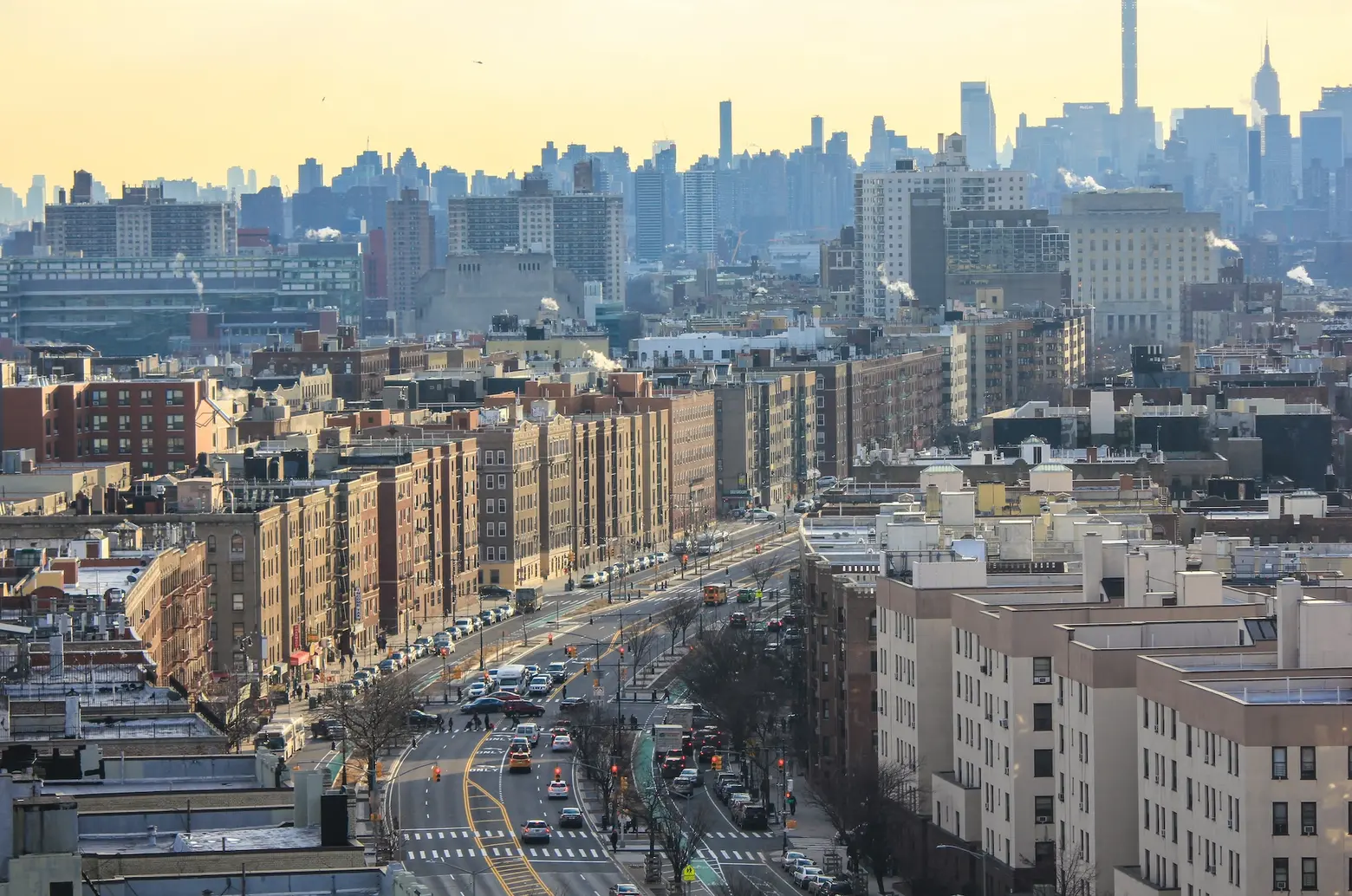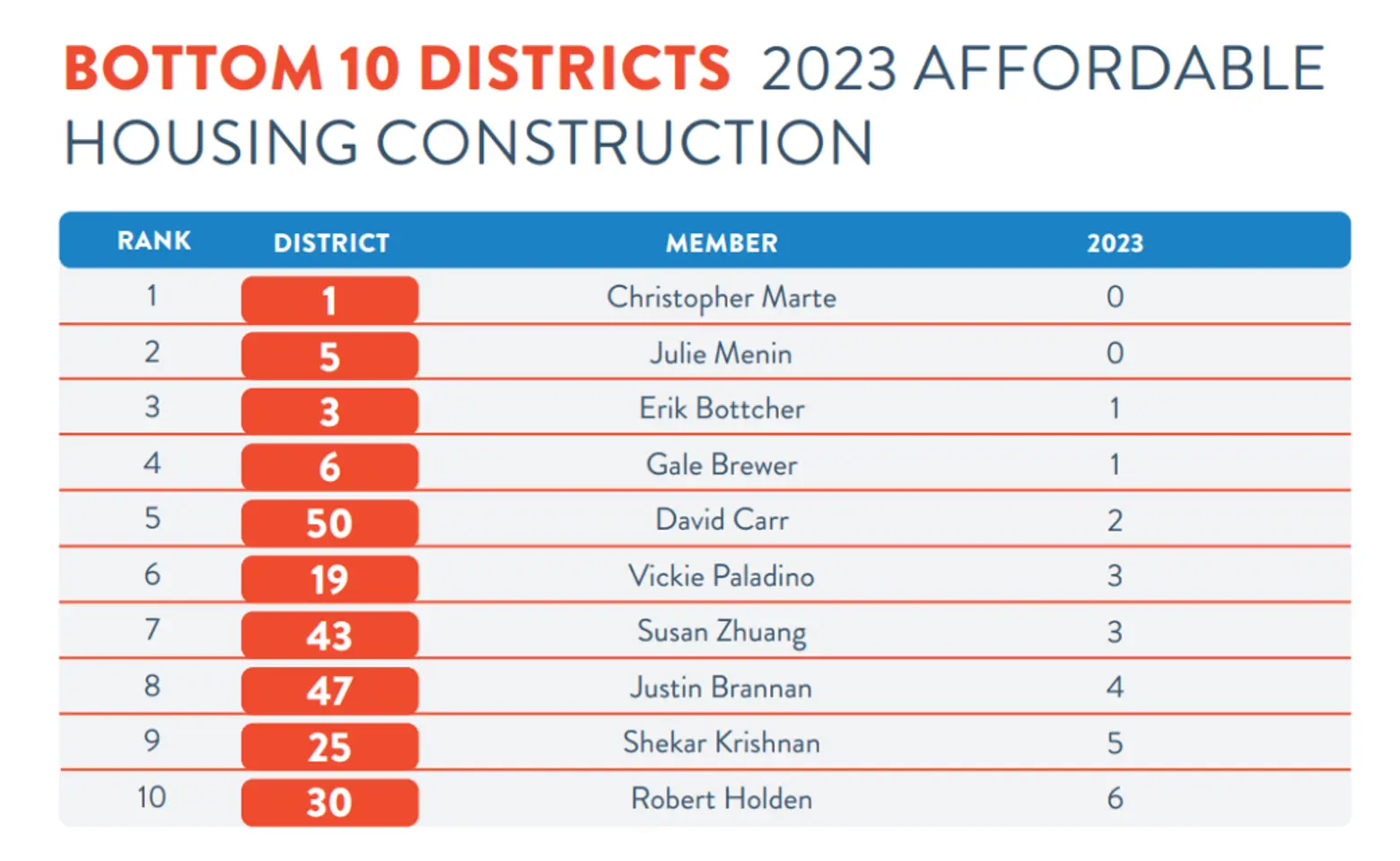Most NYC affordable housing built in low-income communities of color: report

Photo via Wikimedia.
In New York City, a disproportionate amount of new affordable housing is being built in low-income neighborhoods, according to a new report. The New York Housing Conference released on Thursday its third annual NYC Housing Tracker, revealing the city’s inequitable distribution of housing production across City Council districts. Last year, Council District 17 in the South Bronx produced 1,266 units of affordable housing, more than any other district and as many as the bottom 28 districts combined. According to the report, more affordable housing is being built in lower-income, majority Black and Latinx neighborhoods.

According to the report, the top 10 districts that produced the most affordable housing built 600 or more new units last year.
The average population of these neighborhoods is over 70 percent Black and Latino, while neighborhoods that produced the least affordable housing had populations that were less than 30 percent Black and Latino. The average area median income for the top 10 producing districts was roughly $67,000 a year, $20,000 less than the average for the 10 districts with the least affordable housing production.
“While I am extremely proud District 17 continues to set the tone in building the most affordable housing in New York City last year, and the period between 2014 and 2023, I am disheartened that certain neighborhoods are doing little to nothing to produce critically needed affordable housing,” Council Member Rafael Salamanca said.
“In the midst of one of the worst housing crises New York City has ever experienced, the message is clear; every Council District needs to do its fair share to develop affordable housing.”

The least-producing districts produced less than 10 affordable units in 2023, according to the report. While some districts were in highly condensed areas with little to no available land, like Manhattan, others were in low-density areas in the outer boroughs, including parts of Queens, Staten Island, and South Brooklyn.
Council District 6, which encompasses the Upper West Side, recorded a loss in affordable housing production as a result of combining existing housing into single-family homes.
The NYC Housing Tracker is designed to provide elected officials and residents with insights into housing data in every neighborhood. The tracker makes it easy to compare citywide and neighborhood housing averages.
“We thought it was important to start tracking who’s saying yes to housing and who’s saying no,” Rachel Fee, executive director of the New York Housing Conference, told Gothamist. “It’s very clear that some neighborhoods are doing a lot and others have really been left off the hook for years of not producing any affordable housing. And it’s no surprise that the disparities in affordable housing production also track with pretty big differences in income and race by district.”
The report includes a series of recommendations for policy changes to support equitable housing growth, including increasing capital funding to subsidize more units and creating tax incentives for developers to build more housing. The group also supports passing the City of Yes for Housing Opportunity plan, which would make it easier to add more housing in every neighborhood by updating restrictive zoning rules.
RELATED:
Explore NYC Virtually
Leave a reply
Your email address will not be published.





























I’m confused—does this mean that Everybody in NYC should be able to afford All housing in all of NYC, and that All housing in Every neighborhood should be affordable to all ?
not a shock, and the majority of those units in the black and latino communities are not truly affordable, although in the neighborhoods that high crime, undesirable will have real affordability, the bottom line is better off mostly white neighborhoods want to keep status quo, which is called (segregation)
Please keep up the excellent service. Affordable housing is one of the primary and progressive actions. That will do the most good in our society, for years to come. For the most people in dire need of affordable housing.
lottery,low income housing,
need sec.8 reinstated